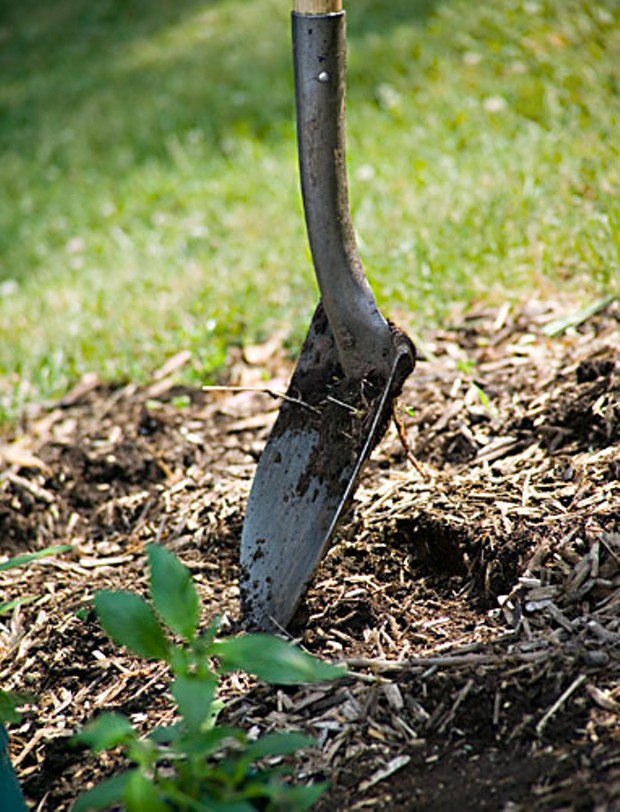Still More Garden Theft
There is no weed worse than the lowdown plant-napping Homo sapiens
By Amy Stewart[
{
"name": "Top Stories Video Pair",
"insertPoint": "7",
"component": "17087298",
"parentWrapperClass": "fdn-ads-inline-content-block",
"requiredCountToDisplay": "1"
}
]
It saddens me to have to bring up the subject of plant theft again. I thought we were past this. Blame it on the economy or the general decline of civilized society, but it seems that people are once again taking stuff from gardens.
This season's round of poaching began when a friend called to tell me that some lovely bits of salvage she'd placed around her garden had been stolen. Nothing large or valuable or obvious, just a few particularly lucky thrift store finds that would look good in the flower beds. Now, if you put anything sparkly in your front yard and don't chain it to a fencepost, you're pretty much asking for it to get stolen. But these weren't sitting in the front yard -- they were in a narrow side garden not even visible from the street. Someone had to walk up her front steps, around the side of the house, and dig around under her kitchen window to find this stuff and walk off with it.
Horrible.
Around that time I finally had a chance to put a plant in the ground that I'd been nursing along for months. It was a new, low-growing, non-invasive buddleia called "Blue Chip" that I saw in bloom at an arboretum in North Carolina last summer. I was in town for a garden writers conference, and rather than attend a big dinner hosted by the conference's corporate sponsors, I sat around in the hotel bar with all the other ne'er-do-wells who had decided to bail on the dinner. When the banquet ended, the bus brought all the attendees back to the hotel, and they came flooding into the bar -- each with a "Blue Chip" buddleia in hand, the very plant I'd been admiring earlier that day. Somehow -- I don't know, there was a lot of alcohol involved, and perhaps some sort of undue influence by my friends at the bar -- I managed to talk a woman out of her buddleia. It came home with me and I kept it alive until we started to get steady rain this fall, at which time I rearranged some plants in the front yard and made room for it in my garden.
Which was great for about two weeks until someone came along, picked it right out of the ground and walked off with it. Perhaps the woman in North Carolina had second thoughts and came back for it -- I don't know. The point is that it's one thing to lose some ordinary plant you bought at the garden center over the weekend, and it's another thing to lose an ordinary plant you scored in a hotel bar during a drunken horticultural brawl. I'm sure I can go out and buy another one, but it won't have a past, and I like a plant with a past.
But this is nothing compared to what happened at Washington Park Arboretum in Seattle, where a thief cut down a scraggly conifer just before Christmas, presumably to use as a Christmas tree. This wasn't any ordinary pine tree: it was a rare Chinese Keteleeria evelyniana that the arborists had been nurturing along for 10 years. It was worth about $10,000 -- if another one could be found, which is unlikely. The arboretum had planted it in part so that they could eventually provide seed to China in the event that it went extinct there. (Apparently it makes a really ugly Christmas tree, so at least the thief didn't get a beautiful decoration out of it.)
As it turns out, plant theft is such a problem in botanical gardens and public landscapes that microchips are becoming a part of their defense strategy. In Palm Desert, the city lost $15,000 worth of golden barrel cactus plants in a six-month period, leading them to look into microchip technology to help catch poachers. The chips can be read by inventory scanners so that garden centers can detect a stolen plant before they buy it. (This assumes, of course, that poachers take their plants to reputable garden centers that are already using scanners to track their inventory. I suspect, however, that most of these high-dollar plants get sold into some sort of underground rare plant market.) Even national parks are looking into the technology, which works so well in woody plants that a tree trunk can grow around the chip for years and still be read by a scanner.
I don't know if microchips are the answer. If deep roots, thorns, spines and prickly needles aren't enough to deter a thief, will a microchip really make a difference? And do we really want our plants sending out wireless transmissions?
Plants come and go. They freeze, they dry up, they get old, they get diseased, they get stolen. The day will come -- probably tomorrow, or next week -- when someone will roll out a GPS-enabled microchip with a corresponding "Find My Plant" iPhone app, allowing gardeners to drive around town and retrieve their plants. As tempting as that is, I think I'm just going to go out in search of another "Blue Chip." Thieves, I'll have it out for your consideration in a week or two. Hope you like it.
Comments (5)
Showing 1-5 of 5
more from the author
-
NCJ Archive: Bring on the Bugs
- Oct 28, 2020
-
Cocktail Garden Crazy Talk
- Jun 13, 2013
-
Now You're Pushing It
- May 9, 2013
- More »
































